
Roots
The journey to understanding hair’s enduring vitality begins not in laboratories of today, but in the sun-drenched lands and verdant forests where early peoples walked. Before the advent of complex formulations, there was a profound connection to the earth’s offerings, a quiet wisdom passed down through generations. Our exploration into ancient hair care is an invitation to consider how deeply rooted human well-being has always been in the natural world, and how this relationship shaped the very resilience and luster of hair. We are not merely tracing historical facts; we are uncovering a lineage of gentle care that speaks to the very heart of hair’s being.

The Hair’s Outer Shield
At the core of hair’s health and visual appeal lies the cuticle, an intricate external layer composed of overlapping, transparent cells, much like the shingles on a roof. This protective shield guards the hair’s inner structures, including the cortex which holds the hair’s strength and color. When these cuticle scales lie flat and smooth, they reflect light, giving hair its characteristic sheen.
A compromised cuticle, with lifted or damaged scales, allows moisture to escape, leading to dullness, roughness, and increased vulnerability to external stressors. Ancient practitioners, without microscopes or chemical analysis, observed these visible qualities, understanding that a vibrant appearance signaled inner strength.
A smooth, closed hair cuticle reflects light, providing natural shine and protecting inner hair structures.
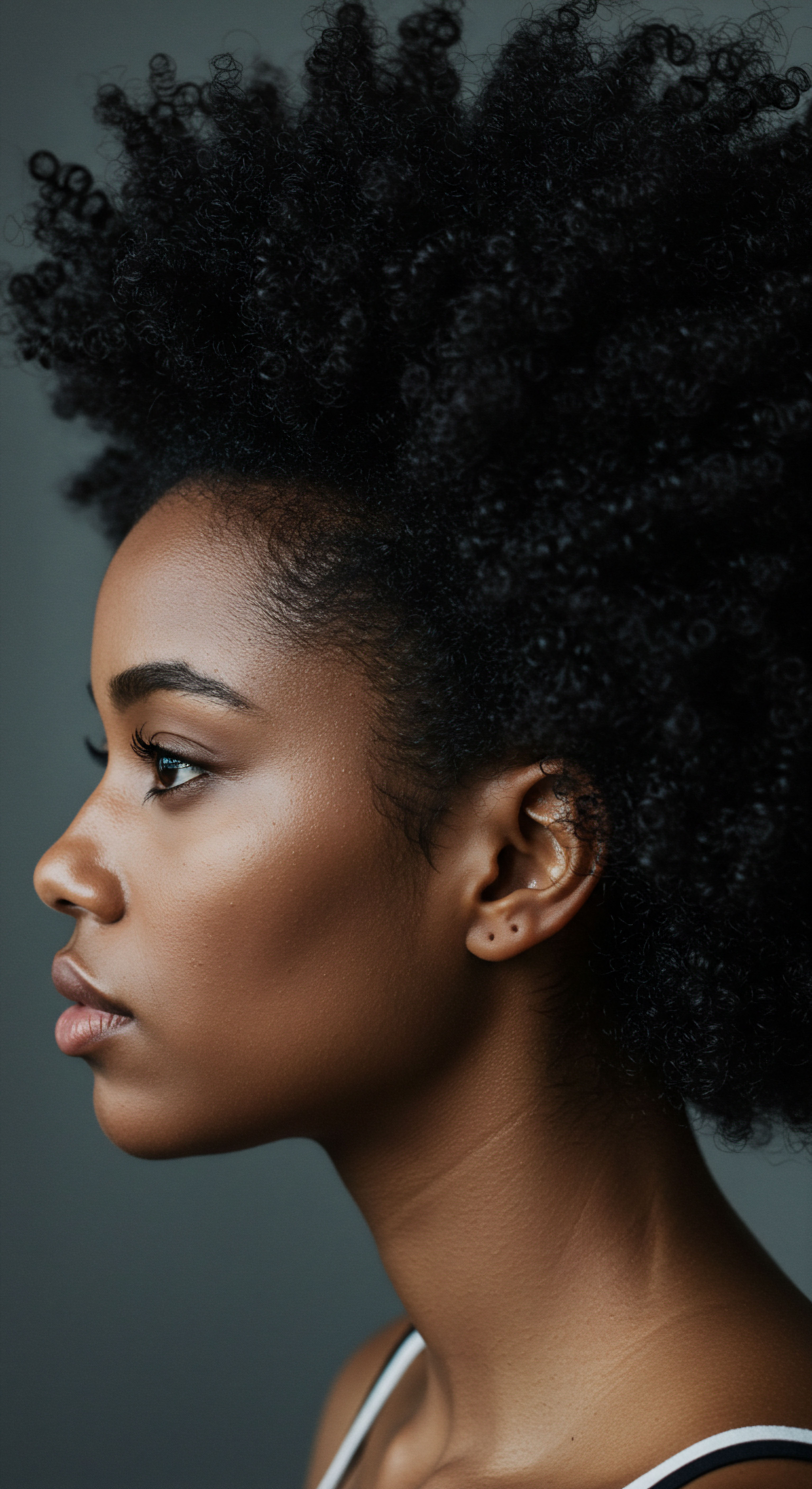
What Did Early Peoples Know About Hair Resilience?
The concept of resilience in ancient hair care extended beyond mere appearance. It encompassed the hair’s ability to withstand environmental challenges, maintain its form, and resist breakage. Early civilizations recognized that consistent, gentle handling and the application of specific natural substances could fortify hair against daily wear.
This understanding was not theoretical but practical, born from centuries of observation and empirical application. They saw that hair, when cared for with reverence, could retain its integrity even in harsh climates.
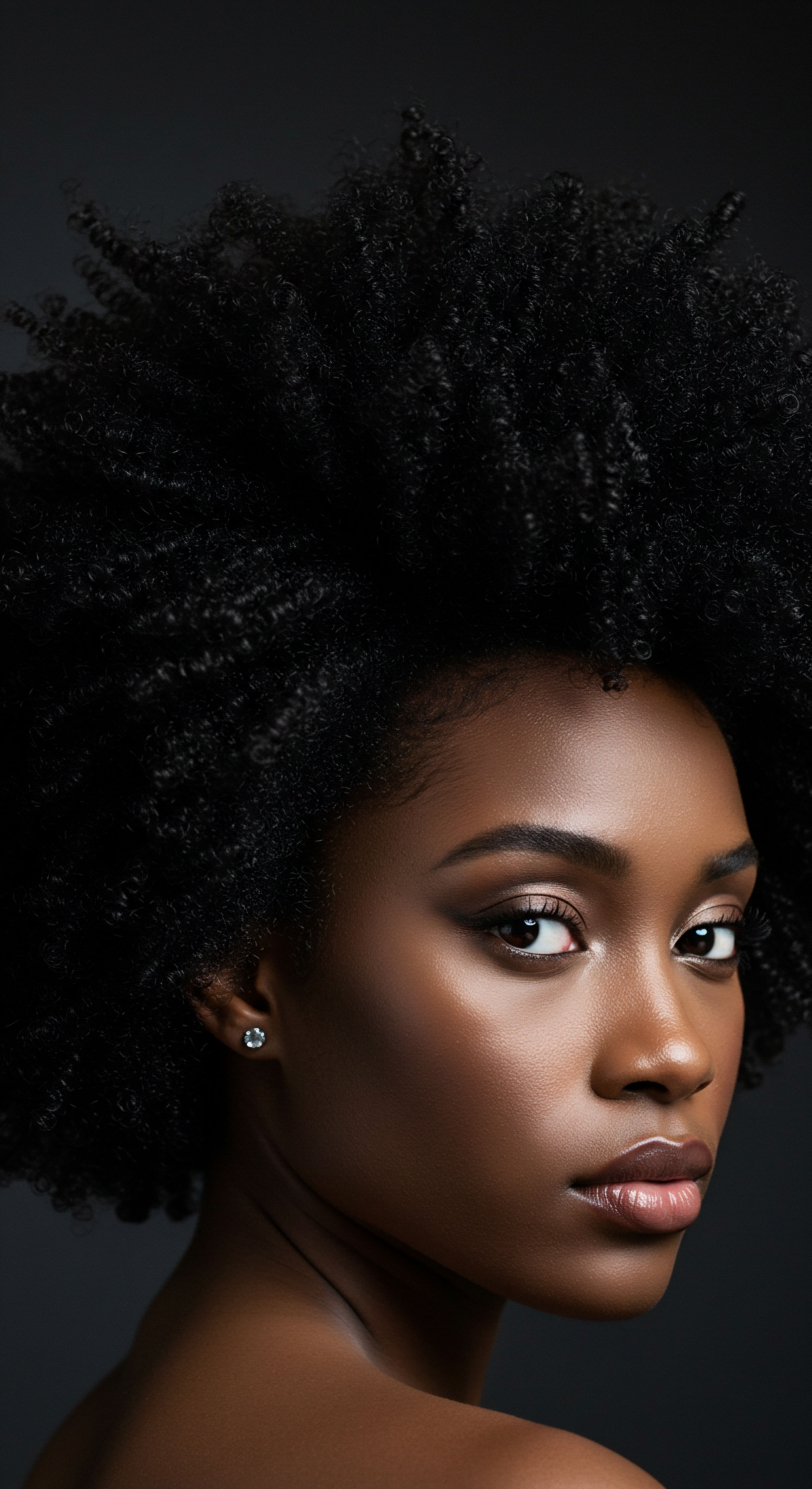
Early Earth’s Hair Wisdom
Across diverse landscapes, early human societies developed sophisticated approaches to hair maintenance, drawing directly from their immediate environments. These practices were often interwoven with cultural identity, spiritual beliefs, and social status. From the arid deserts of Egypt to the humid climes of India, local flora and fauna provided the palette for hair well-being.
- Egyptian Ingenuity ❉ In ancient Egypt, where the scorching desert sun posed a constant threat, individuals relied on rich oils to protect their hair. Castor oil and almond oil were particularly valued for their moisturizing and shielding qualities. These oils were not only applied to nourish strands but also to style elaborate braids and wigs, creating a physical barrier against environmental damage.
- Mediterranean Legacy ❉ The Greeks and Romans, with their appreciation for beauty and hygiene, incorporated olive oil into their routines. This versatile oil, often infused with aromatic herbs, served as a conditioner, adding softness and a delicate scent. Vinegar rinses were also common, likely used to clarify the hair and restore a natural balance.
- Indian Ancestral Practices ❉ The ancient system of Ayurveda, originating in India, placed immense importance on holistic hair care. Ingredients like amla (Indian gooseberry), shikakai (soap pod), and coconut oil were central to these traditions. Hair oiling, a ritualistic practice involving massaging warm oils into the scalp and strands, was believed to stimulate growth, reduce hair loss, and promote overall vitality.
| Region Ancient Egypt |
| Key Ingredients Castor oil, Almond oil, Beeswax |
| Perceived Hair Benefit Moisturizing, protection, styling hold, shine |
| Region Ancient Greece/Rome |
| Key Ingredients Olive oil, Vinegar, Herbal infusions |
| Perceived Hair Benefit Conditioning, shine, cleansing |
| Region Ancient India |
| Key Ingredients Amla, Shikakai, Coconut oil, Neem |
| Perceived Hair Benefit Nourishment, strength, shine, scalp health |
| Region Ancient Africa |
| Key Ingredients Shea butter, Baobab oil, Rhassoul clay |
| Perceived Hair Benefit Deep conditioning, moisture retention, gentle cleansing |

Ritual
Stepping from the fundamental understanding of hair’s structure and the earth’s bounty, we now turn to the practices themselves—the thoughtful gestures and deliberate applications that transformed raw ingredients into acts of care. Ancient hair care was rarely a hasty affair; it was a ritual, a rhythmic engagement with the self and the natural world. These practices, honed over countless generations, were not merely about cleansing or adorning; they were about a deeper connection, a gentle nurturing that left hair not just clean, but truly radiant. This section explores the daily or periodic applications, the methods that gave life to ancient hair.

The Nile’s Silken Secret
The ancient Egyptians, renowned for their meticulous attention to personal presentation, developed a sophisticated regimen for hair. Their practices aimed to combat the drying effects of the desert climate and maintain a sleek, lustrous appearance. They understood the importance of lipids for hair health, applying oils that acted as emollients.
A key element of their routine involved liberal use of various oils. Castor oil, with its thick consistency, was applied to condition and strengthen strands, while almond oil provided moisture and protection from environmental aggressors. These oils were often massaged into the scalp, promoting circulation and distributing natural sebum along the hair shaft.
For styling, beeswax was commonly employed, providing hold and a protective barrier that enhanced shine. The Egyptians also utilized plant-based extracts and clays for gentle cleansing, ensuring hair was not stripped of its natural oils.
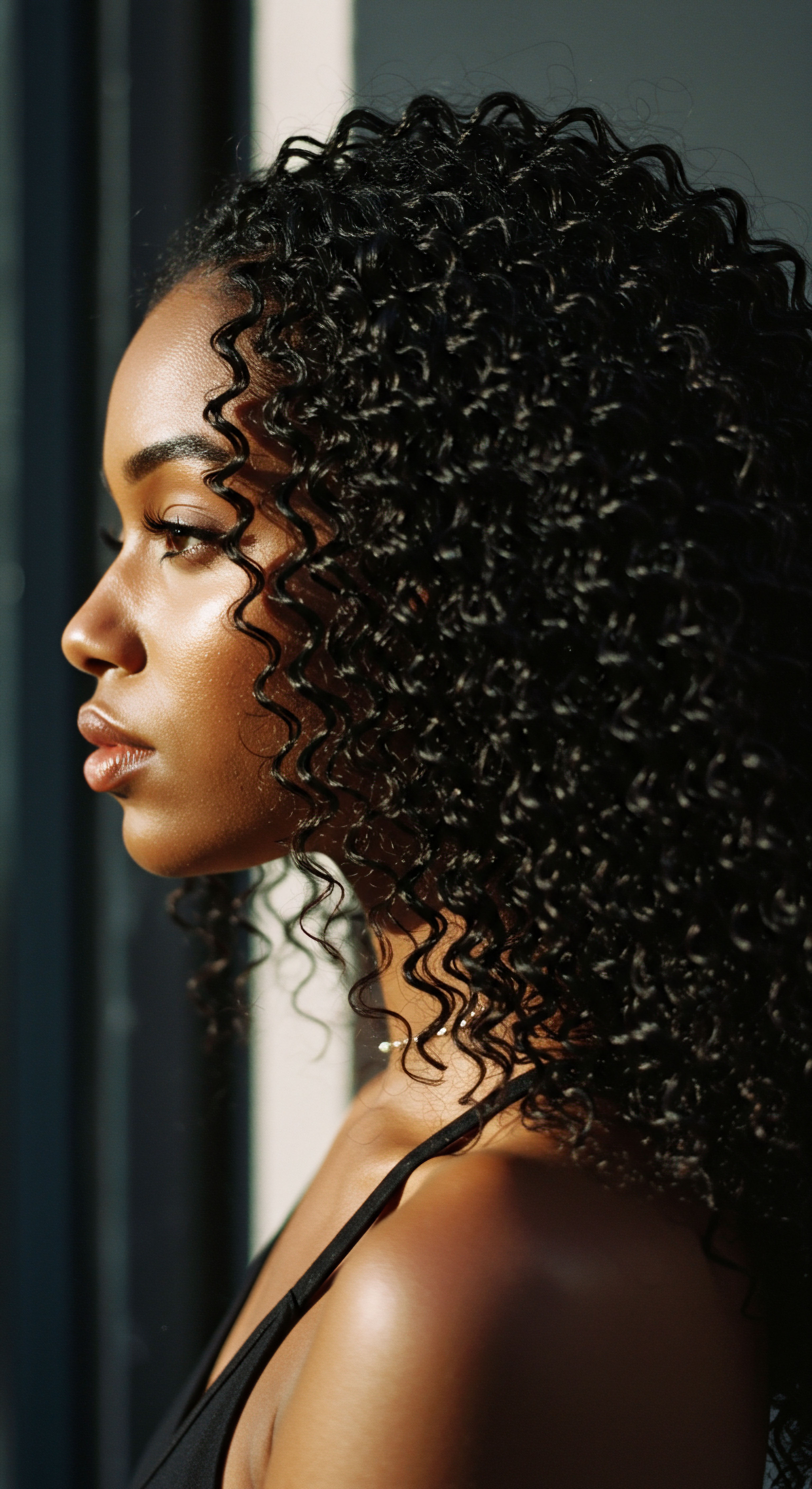
Mediterranean Mists and Oils
In the classical worlds of Greece and Rome, hair care reflected a different aesthetic, often valuing softness and a subtle gleam. Olive oil stood as a cornerstone of their routines, valued for its ability to condition and add a healthy sheen. This oil was frequently infused with herbs like rosemary or lavender, lending pleasant aromas and additional perceived benefits.
Beyond oiling, vinegar rinses were a popular cleansing and conditioning technique. The slightly acidic nature of vinegar helped to smooth the hair’s outer layer, closing the cuticle scales that might have been raised by alkaline soaps or hard water. This practice would have contributed significantly to hair’s natural light reflection and smooth texture. The emphasis was on maintaining the hair’s inherent beauty rather than drastic alterations.
Ancient Mediterranean cultures used acidic rinses to smooth hair cuticles, enhancing natural shine.

Ayurveda’s Crown of Vitality
From the Indian subcontinent emerged Ayurveda, a holistic system of wellness that considered hair an extension of overall health. Ayurvedic hair care was deeply ritualistic, often involving warm oil massages and herbal washes. The choice of oils was specific, often tailored to individual needs or doshas.
Amla, also known as Indian gooseberry, was a prized ingredient. Rich in vitamin C and antioxidants, amla was used to strengthen hair, reduce hair loss, and promote natural shine. Its acidic nature also contributed to cuticle closure.
Shikakai, or “fruit for hair,” was a natural cleanser, producing a gentle lather that purified without harsh stripping. These ingredients, combined with practices like regular scalp oiling, aimed to nourish the hair from the root, preserving its natural vitality and luster.
- Oil Application ❉ Warm oils, such as coconut or sesame, were massaged into the scalp and along the hair length. This ritualistic application stimulated blood flow to the scalp, which was believed to deliver essential nutrients to the hair follicles.
- Herbal Cleansing ❉ Powders made from dried fruits like shikakai and reetha (soapnut) were mixed with water to create natural cleansing pastes. These provided a gentle lather, removing impurities without disrupting the hair’s natural balance.
- Conditioning Treatments ❉ Ingredients like amla were often used as conditioning agents, either as part of an oil blend or as a paste. Amla, in particular, was valued for its ability to smooth the hair’s outer layer and enhance its natural light reflection.
| Ancient Technique Regular oiling and scalp massage |
| Primary Benefit for Cuticle/Shine Lubrication, reduced friction, nutrient delivery |
| Modern Principle Applied Lipid replenishment, mechanical protection, improved scalp circulation |
| Ancient Technique Acidic rinses (e.g. vinegar, citrus) |
| Primary Benefit for Cuticle/Shine Cuticle smoothing, pH balancing |
| Modern Principle Applied pH optimization for cuticle closure, anti-frizz |
| Ancient Technique Natural cleansers (e.g. shikakai, rhassoul clay) |
| Primary Benefit for Cuticle/Shine Gentle impurity removal without stripping |
| Modern Principle Applied Sulfate-free cleansing, preserving natural oils |
| Ancient Technique Protective styling (e.g. braids, wigs) |
| Primary Benefit for Cuticle/Shine Minimizing physical damage and environmental exposure |
| Modern Principle Applied Low manipulation styling, reducing breakage |

Relay
The echo of ancient hair care wisdom reverberates through time, finding resonance in the insights of contemporary science. This section delves into the deeper principles that underpin those time-honored practices, bridging the experiential knowledge of our ancestors with the analytical rigor of today. It is a space where the tactile sensation of an oil massage meets the molecular understanding of lipid layers, where the sheen from a herbal rinse is understood through the lens of pH balance. We seek to understand not just what they did, but why it worked, drawing connections that reveal the enduring efficacy of these gentle approaches.
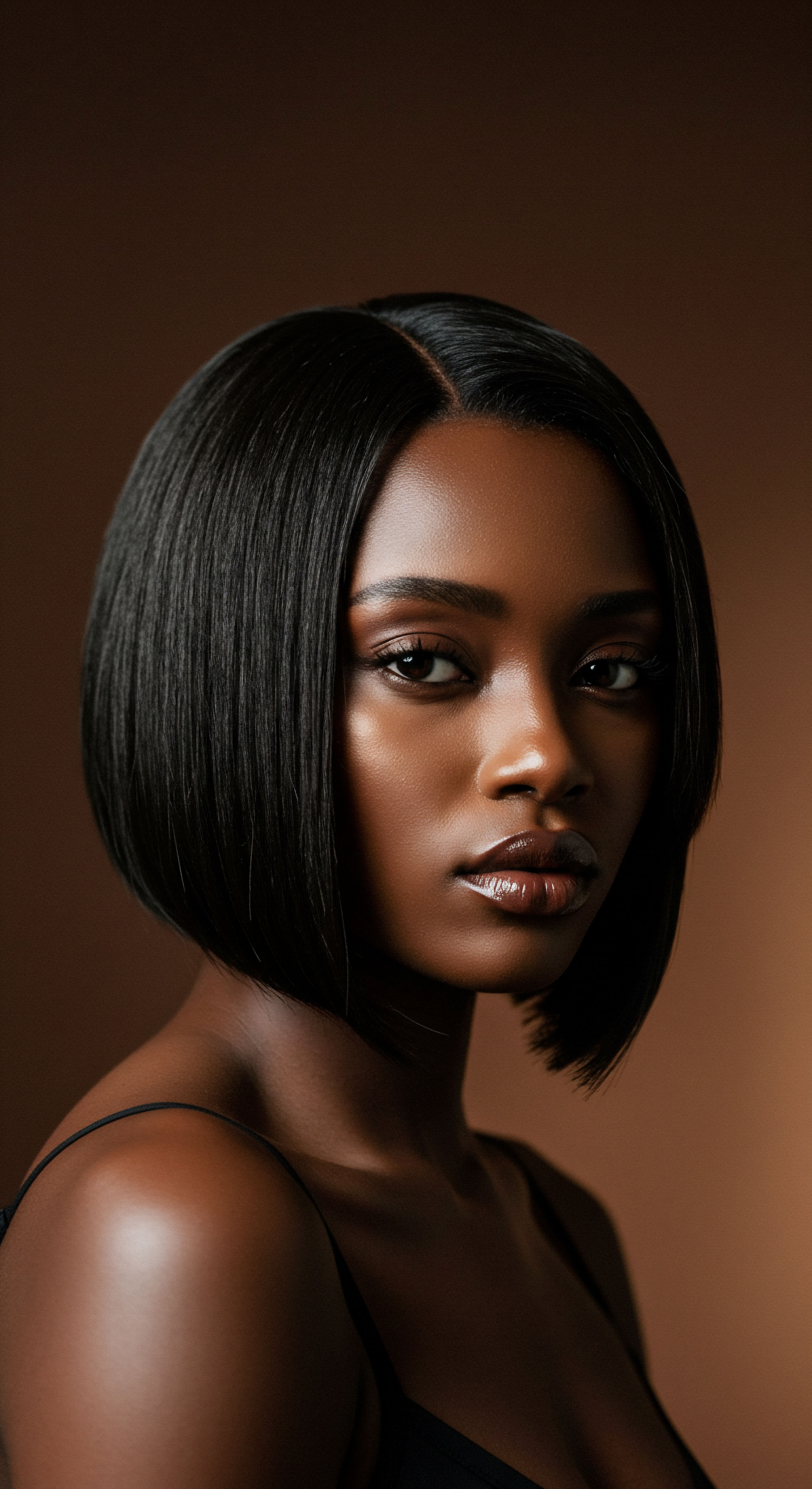
Unlocking the Chemistry of Ancient Practices
Many ancient techniques, though developed without scientific instruments, intuitively aligned with principles of hair biology. The cuticle, the hair’s outermost layer, is a delicate structure easily disrupted by environmental factors, harsh chemicals, or vigorous handling. When the cuticle is damaged, its scales lift, causing the hair to feel rough, appear dull, and lose moisture. Ancient methods often worked to keep these scales smooth and flat.
Consider the widespread use of oils. Oils, rich in fatty acids, function as emollients, creating a protective film on the hair shaft. This film helps to seal the cuticle, preventing moisture loss and reducing friction between strands, which can cause damage.
For instance, coconut oil , with its low molecular weight, has a particular ability to penetrate the hair shaft, reducing protein loss and providing deep nourishment. Similarly, shea butter , a staple in African hair care, contains fatty acids structurally similar to the natural lipids within the hair cuticle, helping to repair and strengthen the hair’s lipid barrier.
Ancient practices often aligned with modern scientific understanding of cuticle health, even without formal chemical analysis.

How Does Contemporary Science Affirm Ancient Hair Wisdom?
The wisdom of using slightly acidic rinses, such as diluted vinegar or citrus juices, also finds strong support in modern hair science. Healthy hair and scalp maintain a slightly acidic pH, typically between 4.5 and 5.5. This acidity helps keep the cuticle layers closed and compact, safeguarding the hair’s internal structure, preserving moisture, and lending a smooth, shiny appearance.
Alkaline substances, conversely, cause the cuticle to swell and lift, increasing porosity and vulnerability to damage. Ancient use of acidic rinses after cleansing would have effectively restored this natural pH balance, promoting cuticle closure and enhancing light reflection.
A striking example of ancient wisdom validated by contemporary research concerns rice water . Used for centuries in Asian cultures for hair care, modern studies have shed light on its active components. Research indicates that inositol , a carbohydrate found in rice water, possesses a unique capacity to penetrate damaged hair and remain within the hair shaft even after rinsing. This sustained presence helps to repair hair from the inside out, improving its elasticity and reducing surface friction.
A study published in the International Journal of Cosmetic Science highlighted that inositol can penetrate damaged hair and mend it, leading to stronger, shinier strands. This scientific backing provides a concrete data point affirming the efficacy of a seemingly simple, ancient practice on hair cuticle resilience and overall hair health.

The Enduring Echoes of Ancestral Care
The continuity of these practices across millennia speaks to their inherent efficacy and the deep connection between humans and their environment. While the tools and precise formulations have evolved, the underlying principles of gentle cleansing, nourishing with natural oils, protecting from external harm, and maintaining the hair’s structural integrity remain constant.
Many contemporary textured hair care philosophies draw directly from these ancestral blueprints. The emphasis on moisture retention, scalp health, and protective styling, so prevalent in today’s natural hair community, mirrors the core tenets of ancient Egyptian, Indian, and African hair care. The understanding that hair is a living extension, deserving of mindful attention and protection, has been passed down through the generations, adapting to new contexts but retaining its fundamental truth.

Beyond Surface Beauty The Deeper Meaning
The quest for healthy, radiant hair in ancient societies extended beyond mere aesthetics. Hair often held profound cultural, spiritual, and social significance. In many traditions, it was a symbol of identity, strength, or status. The care rituals themselves were acts of self-reverence, community bonding, or spiritual connection.
The time invested in preparing herbal concoctions, applying oils with mindful strokes, or meticulously braiding hair was not seen as a chore but as a valuable practice that connected individuals to their heritage and to the natural world. This deeper meaning infused the practices with a holistic purpose, reinforcing the idea that beauty, particularly hair beauty, arises from a place of wellness and respect.
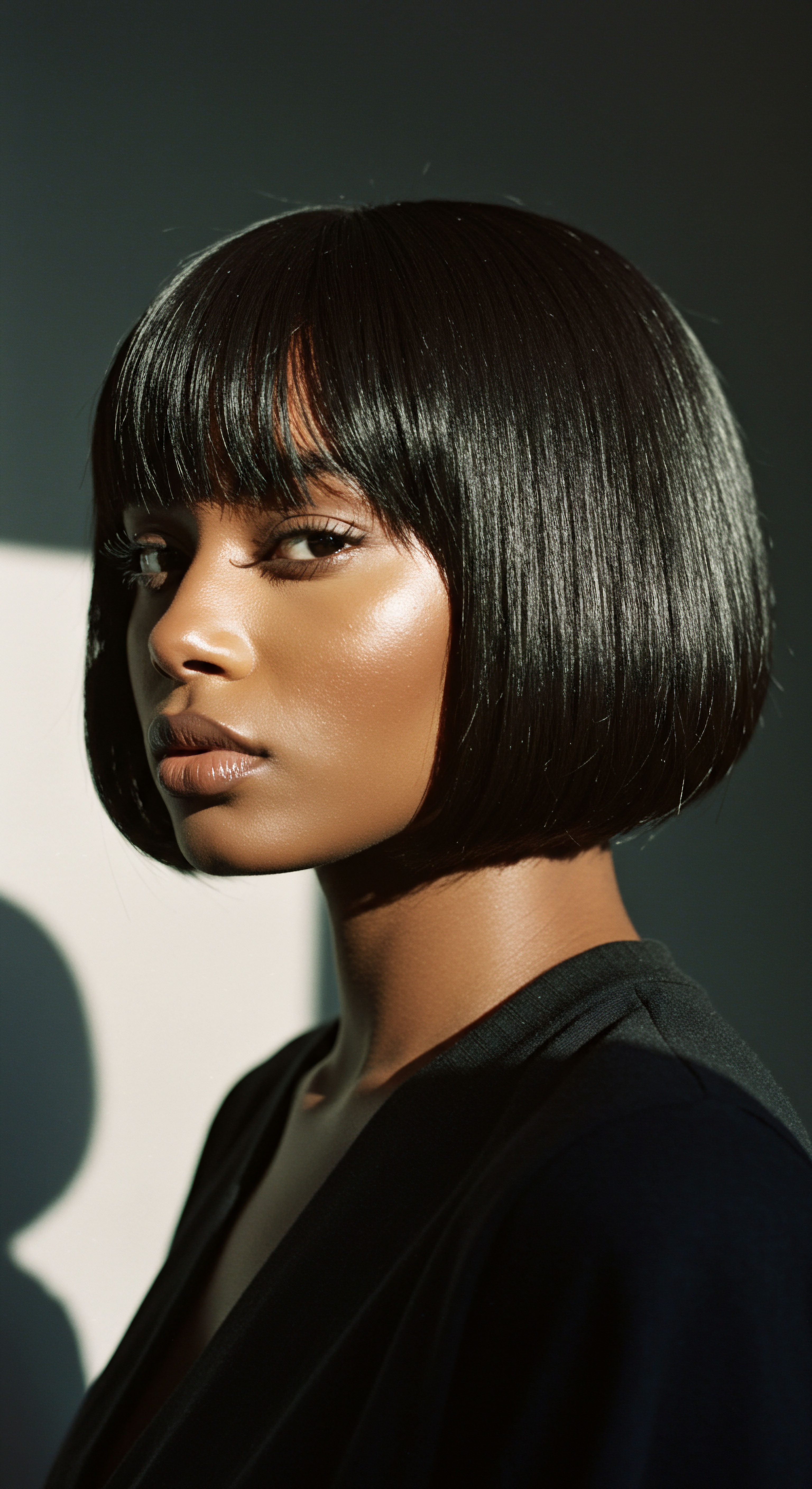
Reflection
As we close this exploration of ancient hair care, a quiet realization settles ❉ the pursuit of vibrant, resilient hair is a timeless human endeavor. The whispers of old traditions, carried on the wind from distant lands, remind us that true care is often found in simplicity, in patience, and in a deep reverence for nature’s offerings. The ancient hands that pressed oils from seeds, steeped herbs in water, and braided strands with purpose, laid down a foundation of wisdom that continues to guide us.
Our modern understanding, illuminated by scientific inquiry, does not diminish their ingenuity; rather, it amplifies the profound truth in their gentle ways. May we continue to learn from these echoes, finding our own rhythm of care that honors both the past and the present, allowing our hair to tell its own luminous story.

References
- Malati Mullurs. Ancient Indian Beauty Secrets. 2015.
- Haluk Çay. Beauty Secrets and Recipes from Ancient Civilizations. 2023.
- Aveline Saphino. The Beauty Secrets ❉ From Ancient Wisdom To Modern Science – Your Guide To Timeless Beauty. 2024.
- Wayne Dunn. Sacred Shea ❉ Ancient Beauty Secrets Reimagined for Modern Self-Care. Baraka Shea Butter, 2024.
- Rele, J. S. & Mohile, R. B. (2003). Effect of mineral oil, sunflower oil, and coconut oil on prevention of hair damage. Journal of Cosmetic Science, 54(2), 175-192.
- Gavazzoni Dias, M. F. R. (2015). Hair Cosmetics ❉ An Overview. International Journal of Trichology, 7(1), 2–15.
- Gopinath, H. & Devi, P. (2021). Formulation and Evaluation of Fermented Rice Water Herbal Shampoo. Journal of Drug Delivery and Therapeutics, 11(4-A), 104-108.
- Matsuzaki, K. (2010). Development of Hair-Care Products from Rice Water ❉ Visualizing the penetration of a protective compound into the hair using spectroscopy. SPring-8.
- Puzan, M. & Hore, D. (2024). An Optimal Combination of Inositol and Phytic Acid Effectively Promotes Hair Growth. Cosmetics, 11(3), 67.
- Lodha, G. (2019). Formulation and Evaluation of Polyherbal Shampoo to Promote Hair Growth and Provide Antidandruff Action. Journal of Drug Delivery and Therapeutics, 9(4-A), 296–300.